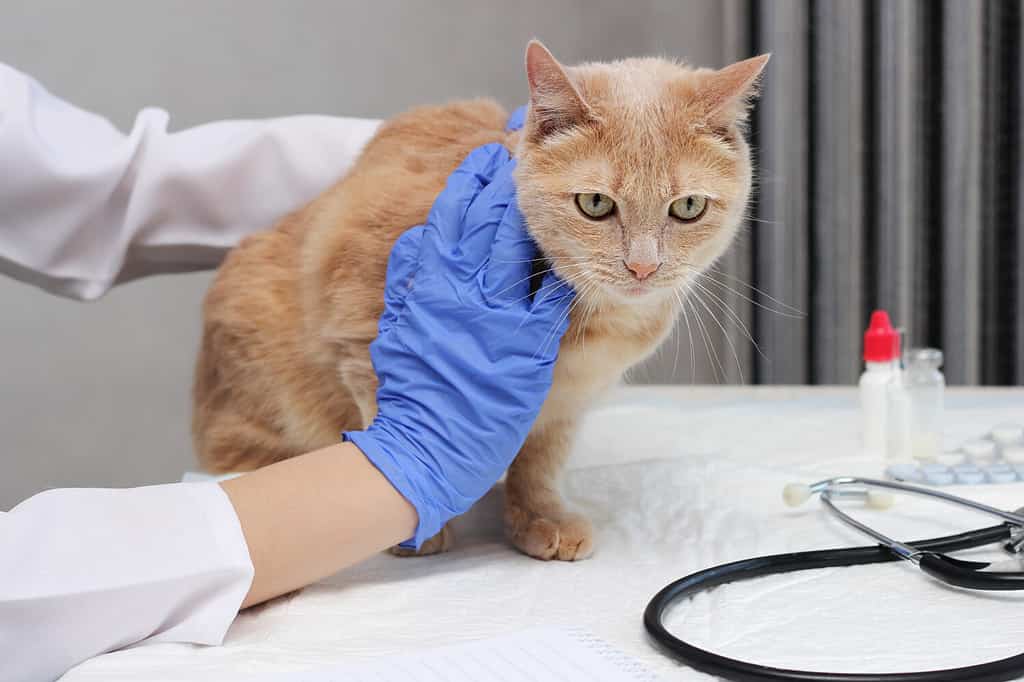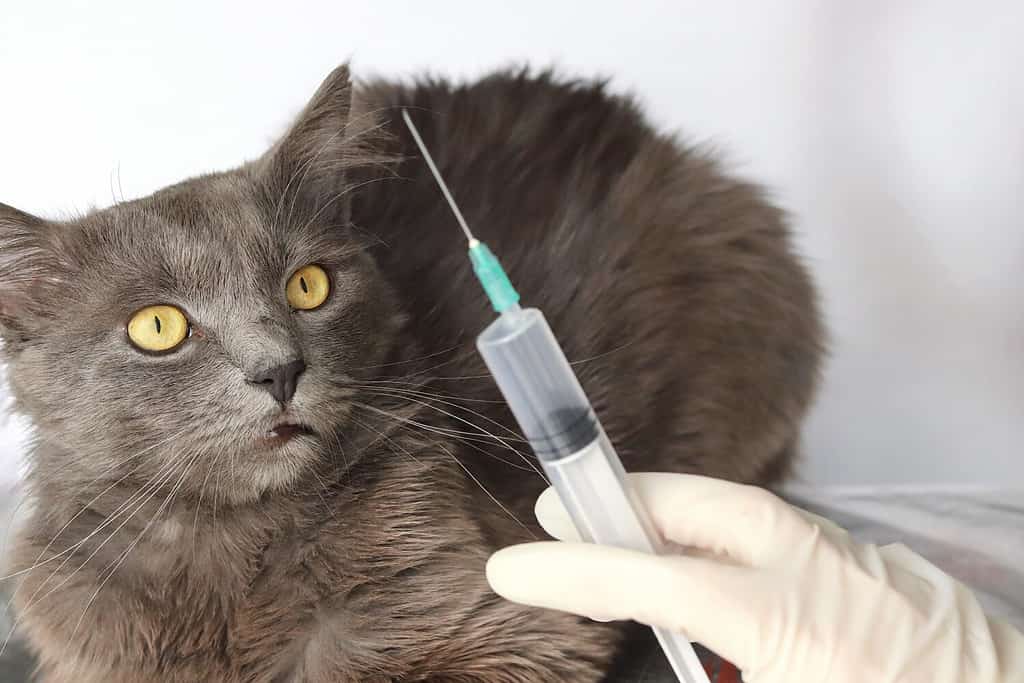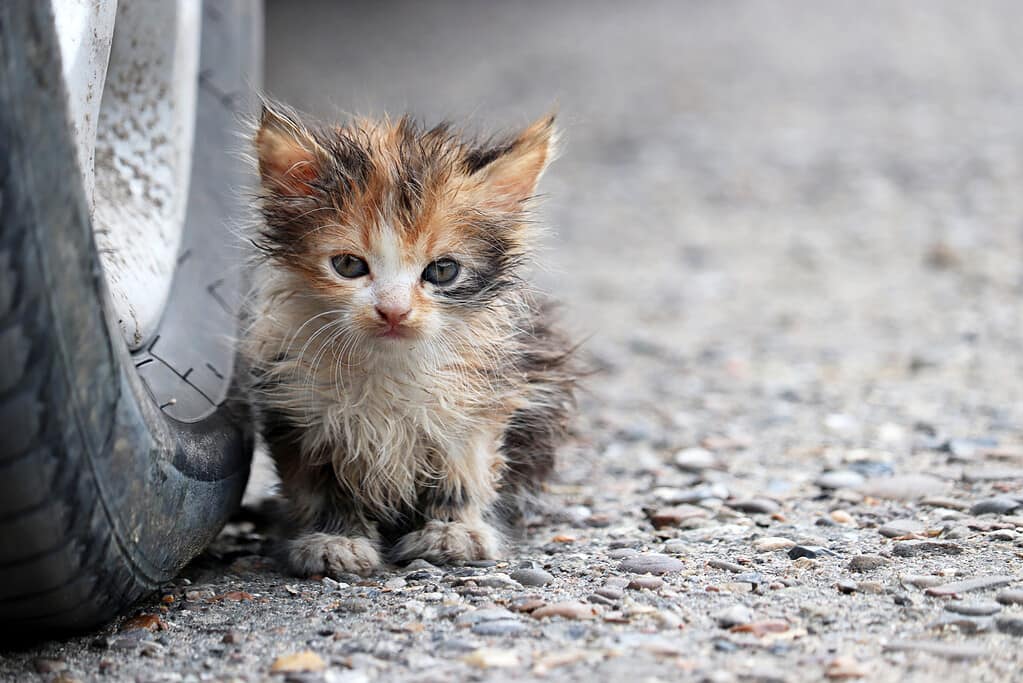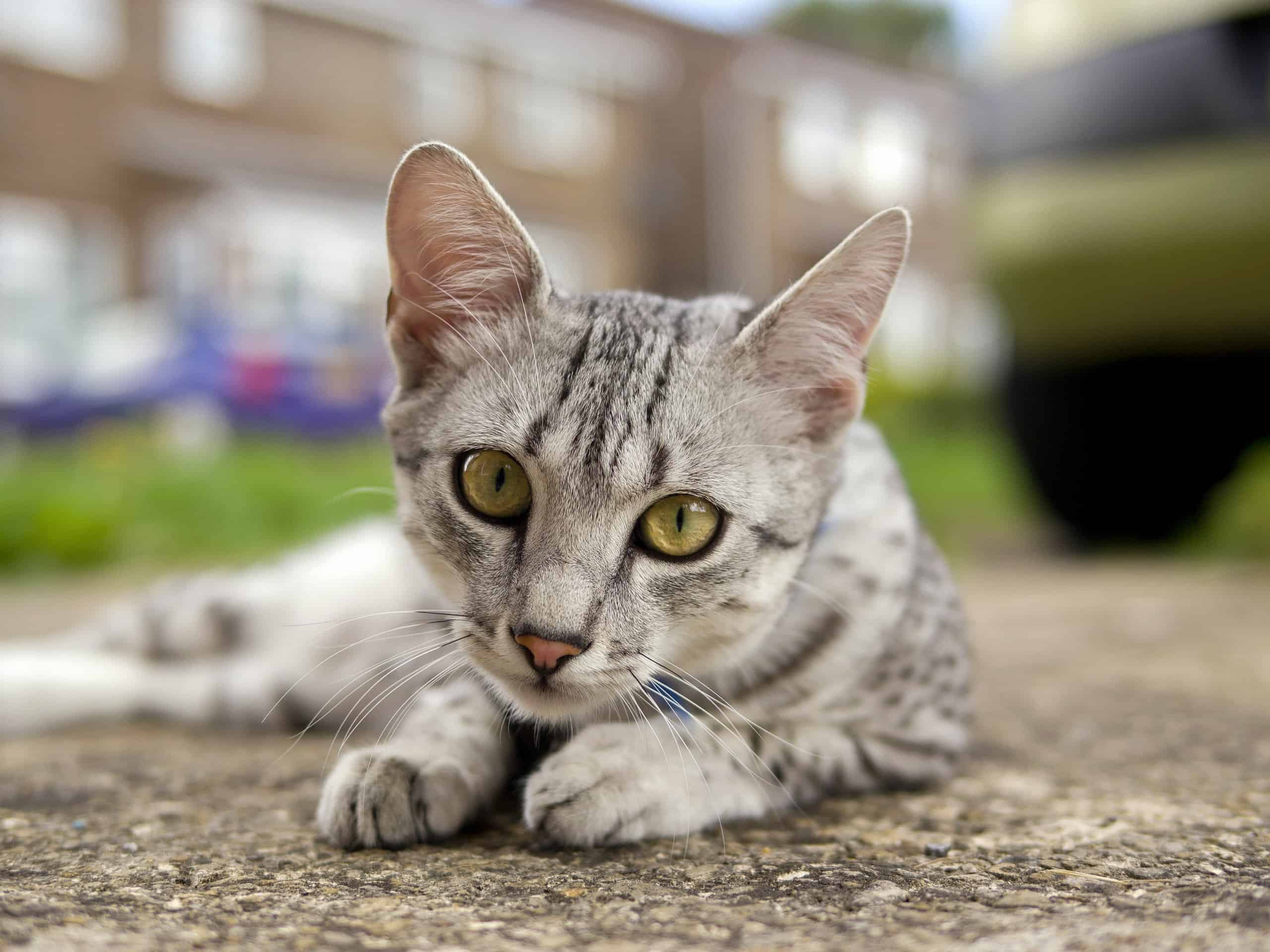There is little else that leaves a cat owner feeling as helpless as when their pet is sick. What can be even scarier is when the cat is fatally sick. Early intervention is often not enough when dealing with some feline illnesses. One of the worst viruses your cat can acquire is feline distemper. Luckily, it is a highly preventable illness, and the preventative measures are not going to break the bank. Let’s dive right into discussing feline distemper and how to keep your cat safe.
What is Feline Distemper?

Watching a pet suffer while you stand by helpless is one of the worst feelings in the world.
©YULIYA Shustik/Shutterstock.com
Feline distemper, also known as panleukopenia or parvovirus, is a very serious and often deadly illness. There is also a canine distemper that is equally as dangerous. The virus is highly contagious in unvaccinated animals. Canines cannot catch Feline distemper, and vice versa. They are two completely different viruses requiring two species-specific vaccinations.
One detail that is the same in both variations of the panleukopenia virus is that it is the most severe and most common in very young animals. Kittens have very little on their side when it comes to feline distemper. Most often, it rapidly spreads through a litter, killing each of the kittens. It may have originated with the mother cat, or she could be a carrier and might never have symptoms. It is also very possible for the mother to be a carrier or asymptomatic and pass the virus onto her unborn kittens. The prognosis is grave when that is the case. Adults rarely catch it, but most adult cats in households either have immunities or have been vaccinated to prevent it.
Symptoms of Feline Distemper
Feline distemper very quickly causes white blood cells to become very high, making it possible for the small cat to develop secondary infections while fighting the illness. The symptoms of feline distemper, in order, often include listlessness, high fever, depression, weakness, severe (often bloody) diarrhea and vomiting, dehydration, pain, anorexia, exhaustion, labored breathing, collapse, and death.
If kittens carry the virus before or shortly after birth, they will generally die. If they live, there is a good chance of brain damage that causes tremors, incoordination seizures, blindness, and other complications. Some may never show signs of the deadly virus but can spread it to other healthy cats.
Frequently, the kittens will also develop secondary infections that attack their respiratory systems. This causes yellow and green mucus to collect around their noses and eyes. In some kittens, there is never a sign they were ill until death.
How Feline Distemper Spreads

Sadly, many community cats fall victim to feline distemper from sharing spaces.
©Natalia de la Rubia/Shutterstock.com
Some of the worst parts of feline distemper are how easily it spreads, how difficult it is to eradicate from the environment, and how long the virus can live outside of a host. Anything that comes in contact with an infected kitten or cat carries the virus. It can spread through bodily waste, litter boxes, scoopers, food and water dishes, bedding, carpeting, fleas, cages, anything worn by a person in contact with the kitten, toys, and literally anything that has come in contact with the kitten. Keep in mind that with liquid and severe diarrhea or violent sneezing, particles can land in places that you might not think of. A kitten may go without symptoms for several days to a week prior to the virus showing signs.
Adopting from Rescues and Shelters
If your cat goes outside or is one you’ve recently adopted, it is possible that they have come in contact with another cat with feline distemper or materials an infected cat came in contact with. This can sadly be the case at rescues and shelters. Though many rescues test for the virus once a cat is brought into their facility, it’s possible the cat had just become infected and wouldn’t be showing signs or testing positive yet, and so it slipped through the cracks. Most shelters cannot afford to test all cats and kittens that come in and just have to hope for the best.
Shelters have minimal staff, and many who help out are volunteers. They may not know how serious feline distemper is and may not have bleached all materials that came into contact with the cats. One of those cats might have been newly ill or asymptomatic. When the bedding, dishes, cage, or litter box is reused, the next resident may catch it. As soon as you’ve been adopted from a rescue or shelter, ask to see the feline distemper test results and vaccination information.
Outdoor Cats
If you’ve taken in a stray cat or kitten or if your cat is not vaccinated and goes outdoors, you are running a big risk. In the case of taking in a stray, make sure to keep them away from any cats in your home until they have been tested and vaccinated and their two-week quarantine has expired.
If you have a cat who likes to go outdoors, it is always a gamble since many things may happen to them when they are not safe in your home. An unvaccinated cat can easily come in contact with an infected stray cat or an area where an infected cat has been. It’s possible that you may not know about the illness until your cat dies from it. Always vaccinate your cats, even if they are always indoors. It’s impossible to know where feline distemper germs might be. It could be on something you came in contact with at a thrift store, an area you walked through outdoors, or a million other places. This is not an illness you want to take a risk with.
Cleaning Up After Feline Distemper
Feline distemper can survive on surfaces, clothing, bedding, toys, etc for a very long time. It is important to disinfect everything with bleach or a disinfectant made specifically to combat the virus. It is very important to contain the virus in one location and not spread it throughout your house. If this terrible illness has been in your home, be sure to wear shoe protectants over your shoes before entering the room and, ideally, leave the infected clothing in the room to be thrown away once the cleanup is completed. Everything that came in contact with the kitten will need a thorough cleaning or put in the trash. Be sure to place any questionable material in trash bags before leaving the room.
How to Keep Your Cat Safe

The best way to prevent feline distemper and other illnesses is to have your cat vaccinated as early as possible.
©Alesia Fes/Shutterstock.com
Going to the vet is expensive, especially if you have more than one cat. However, it is much worse to lose your cat to feline distemper. Feline distemper is easy to avoid with a yearly vaccine. The first round of vaccines will need a booster in two to four weeks; then, it’s yearly. The feline distemper vaccination isn’t alone in the vaccine, either. You pay one price for a vaccine with typically four illnesses covered. Calicivirus, panleukopenia (feline distemper), rhinotracheitis, and Chlamydia psittaci are all covered.
One of the best decisions you can make as a pet owner, whether it’s dogs or cats, is to vaccinate them as early as you can and stay up to date with their vaccines following the initial dose. Think of your cat as you would yourself or a child; it’s so much easier to kick yourself for spending money on a vaccine than it is to kick yourself for watching your cat die of an illness you could have prevented. Harsh, but sadly, true.
Over and Meowt

Helping homeless cats and kittens is a wonderful thing to do, but do your part and vaccinate them.
©Oleg Elkov/iStock via Getty Images
It may sound like a lot to take in and seem quite overwhelming, but it needs to be heard and understood. Having a pet can be a very rewarding experience, as can saving homeless animals. Just make sure to take each to the vet immediately. They need to be vaccinated and then quarantined so that you will be able to watch them and make certain they are not ill. Until that has happened, it isn’t safe to introduce them to other pets and children. There are plenty of other issues, like worms and other parasites, that will also need to be dealt with before you let your new friend run through your house and sleep in your bed. Being a pet parent may not always be easy, but it is worth it.
Thank you for reading! Have some feedback for us? Contact the AZ Animals editorial team.








